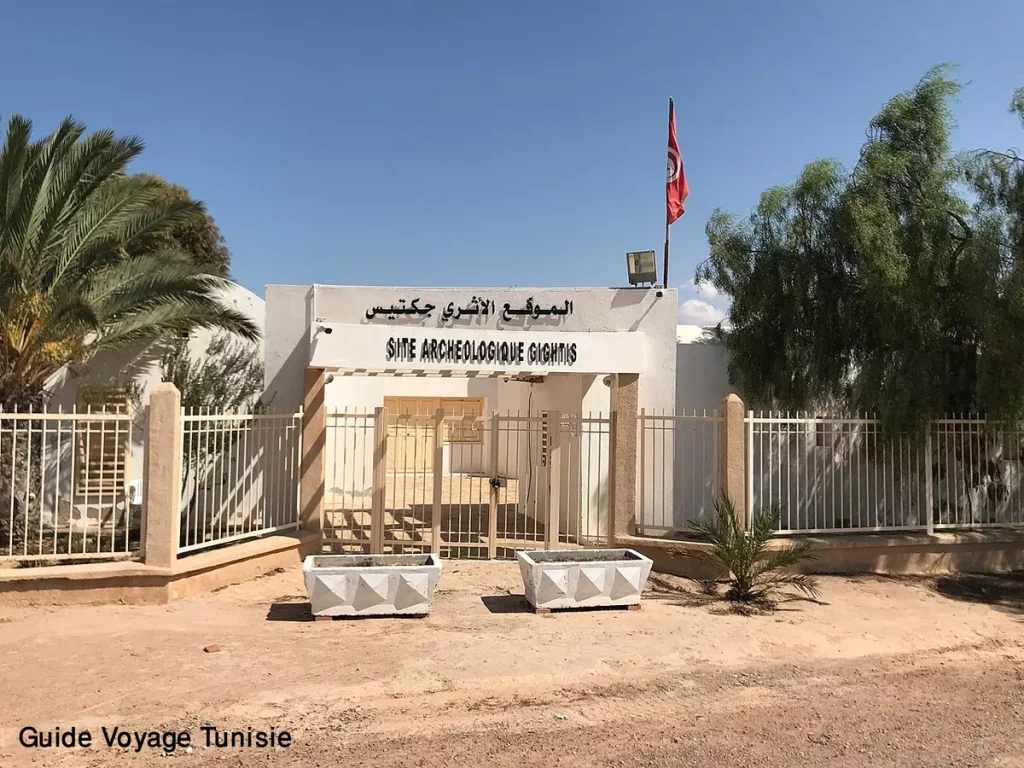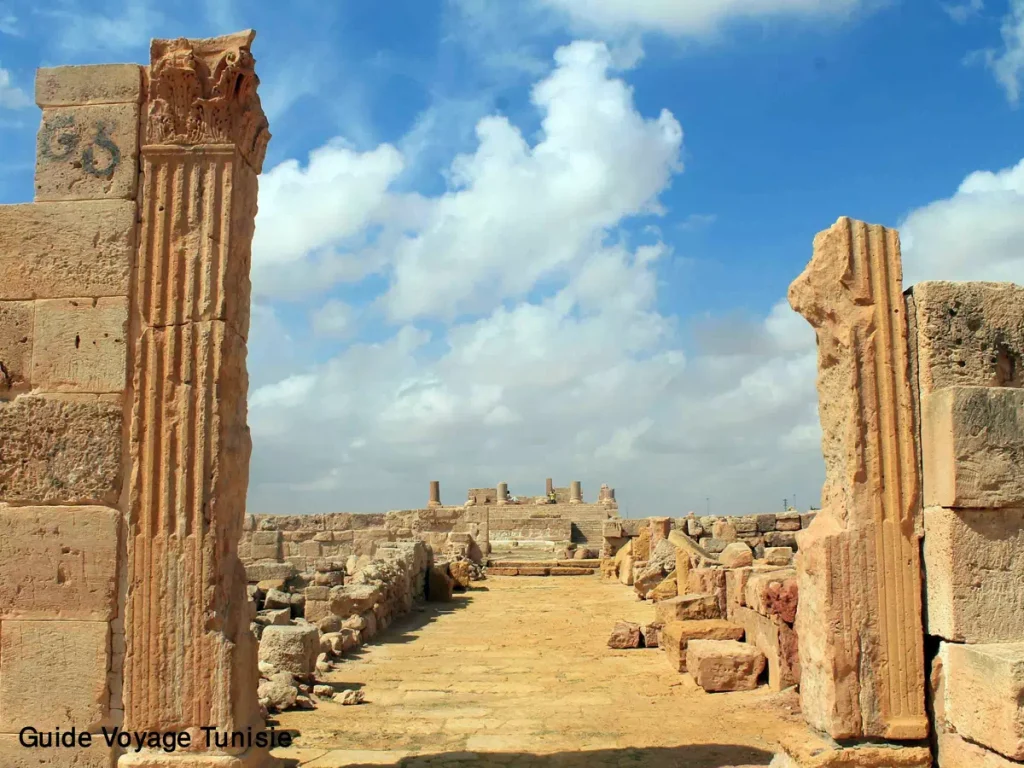Archaeological site of Gightis
The archaeological site Gigthis or Gigthi is an ancient site located in southern Tunisia, on the territory of the governorate of Medenine between the island of Djerba and the peninsula of Medenine.
It is located 1km south of the village of Sidi Salem Boughrara and has an area of 60ha. It is also located 27km from Medenine and 20 km from the Jorf in Djerba
The site is located at the bottom of the Gulf of Boughrara, facing the island of Djerba, on the ancient road linking Carthage to Leptis Magna.
Of Punic origin, this site was identified for the first time on March 18, 1860 by the French Victor Guérin thanks to two inscriptions found on site: the name gigthenses indicates the location of this site.
The city of Gigthis is part, in the sixth century BC. J.-C. of the territory submitted to Carthage. In the 1st century, Gigthis was already a city with a fairly elaborate urban fabric. However, it was not until the 2nd century that it became a municipality under Emperor Antoninus Pius.
From then on, it continues to flourish to become, thanks to its economic growth, one of the most beautiful and prosperous trading post towns in the Gulf of Boughrara and a center around which the riverside towns gravitate.
This city is bounded to the north and north-west by two Punic-Roman necropolises and a Byzantine fortress, to the east by the sea and the remains of a port, to the south-east by a vast plateau dominated by a temple of Mercury and to the West by the MC 108 road
The history of the city goes back to the Punic era testified by the two necropolises which date from the 3rd and 2nd century BC.
In the second century BC, Gigthis became a Numidian territory under King Massinissa.
Around 40 BC, this city was part of Africa Nova created by Julius Caesar.
In 27, Gigthis was part of the Proconsular.
Towards the end of the 3rd century AD, it became part of Tripolitania
Gigthis, was at the crossroads of the main communication routes. It enjoyed prosperity over the centuries and became a municipality under Antoninus Pius (138-161)
In Christian times, the city was the seat of an episcopate as indicated in the “notice of the episcopal seats of Tripolitania”.
In 411, Gigthis was represented by the Catholic bishop Catulinus
With the Byzantines, in the 6th century, Gigthis had a citadel. This citadel had the role of controlling the main coastal road linking the main ports of Little Sirte
In the XIV century, during the passage of the Arab chronicler Al Tijani, March 7, 1307, Gigthis was in ruins
For the Islamic period, the site did not leave many traces, only shards of glazed green ceramics, remains of hydraulic installations such as basins, wells and reservoirs.
In the middle of Gigthis is the Roman forum. All around stand religious and official buildings, the most important of which is the capitol. On the outskirts of the town lie the remains of a series of bourgeois dwellings, some of which retain traces of very beautiful corridors paved with monochrome and polychrome mosaics.
A sustained maintenance and restoration campaign carried out in recent years has made it possible to clear the site and highlight its various components: capitol, forum, sacred spaces, market, living quarters, etc.
Hours of operation
From 16/09 to 31/05:09.30-16.30
From 01/06 to 15/09:08.00-12.00/16.00-19.00
Ramadan Schedule 9:00-16:00
Entrance fees
5 TND
Remarks
Closed Friday
Amenities
– Bathroom
– Shop
– Cafeteria
The archaeological site of Gightis in pictures

